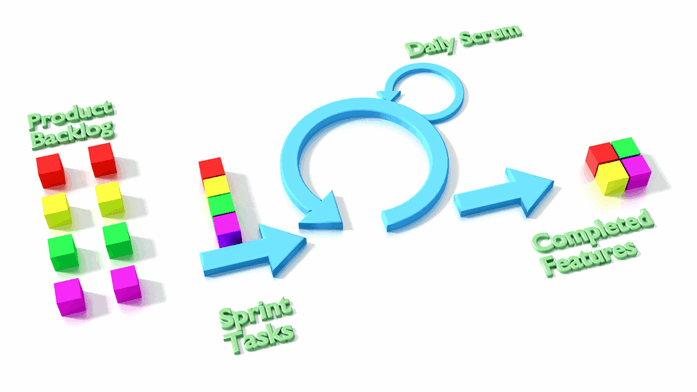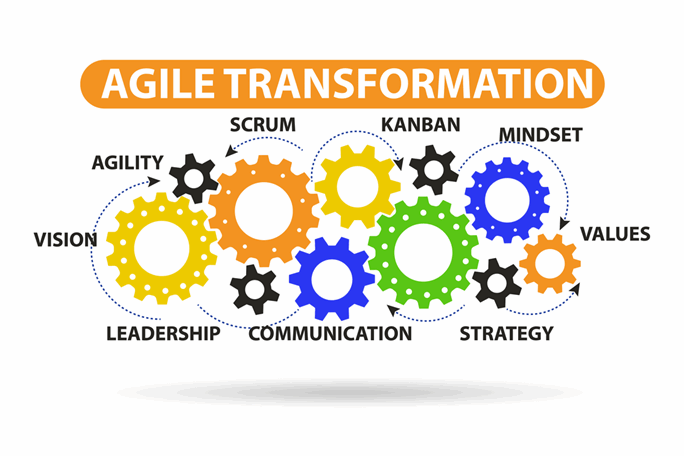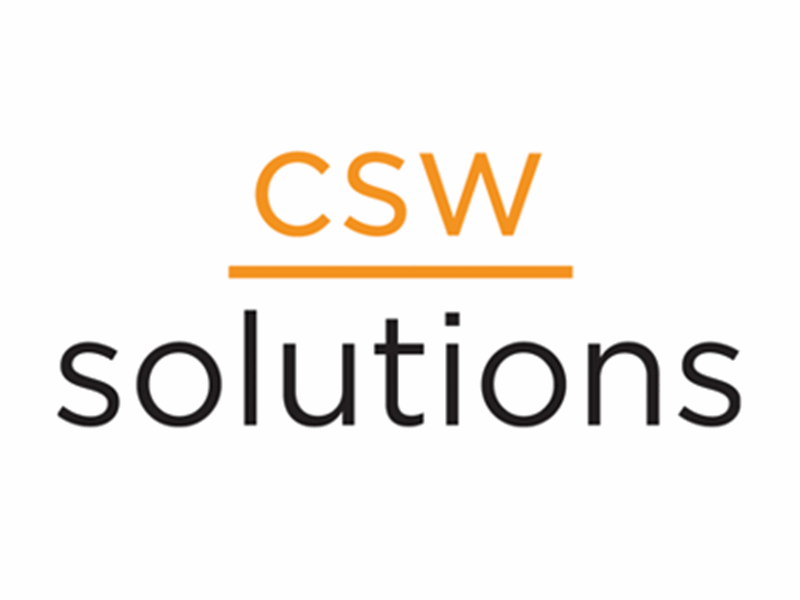AI is poised to create whole new ways of working. How can you use AI to fix work at your organization? Findings from the Microsoft Work Trends Index Annual Report points to 3 insights you need to adopt AI in a timely, responsible way.
A Guide to Agile Methodologies in Software Development
In today's rapidly changing world, businesses need to be able to adapt quickly to stay competitive. The same principle applies to software development. Agile methodologies have emerged as a game-changer in software development, enabling businesses to deliver high-quality products more efficiently and with greater customer satisfaction. In this blog post, we will provide a comprehensive guide to agile methodologies, explaining how they can be applied in software development, the most significant practices, and the benefits they bring to businesses. Whether you're new to agile or looking to improve your current processes, this guide will provide valuable insights into how agile can help your business succeed.
The Essence of Agile Methodologies
Agile methodologies have a seat at the table, as they say, and continue to offer significant contributions to the world of software development. These methodologies not only result in a faster and more efficient development process, but also puts the customer's needs and satisfaction at the forefront of the development process. This is why businesses are adopting Agile methodologies into their software development processes.
Agile Methodologies and Collaboration
One of the core principles of agile methodologies is collaboration. Unlike traditional waterfall processes, where different teams work sequentially on a project, agile methodologies encourage cross-functional teams to work collaboratively on a project. By working together, teams can break down silos and better understand each other's roles and responsibilities. Agile promotes knowledge sharing and increases team transparency. When everyone is working together towards a common goal, tasks can be completed more efficiently, and the end product is of higher quality.
Agile Methodologies and Customer Satisfaction
Another key benefit of agile methodologies is that they focus on delivering customer value. Instead of waiting until the end of a project to receive feedback, agile methodologies encourage ongoing customer collaboration. This means that customers are involved in the development process, providing frequent feedback and suggestions for improvement. By continuously incorporating customer feedback, businesses can ensure that the end product meets the needs and expectations of their target audience. This approach can lead to higher customer retention rates.
Agile Methodologies and Flexibility
The digital world never stops moving and businesses must be able to adapt quickly to changing market conditions. Agile methodologies enable businesses to be more flexible and responsive to changes by breaking down projects into smaller, manageable tasks. This approach allows teams to prioritize and adjust their workload based on shifting priorities. As a result, businesses can be more nimble and respond more quickly to market demands.

Exploring Different Agile Practices
Agile software development is a flexible and iterative approach that allows businesses to respond rapidly to changes in requirements and project scope, resulting in a faster and more efficient development process. Let's cover the different agile practices that you can choose from.
Scrum
Scrum is an Agile framework that focuses on delivering high-quality products through small, self-organizing teams. It is based on a set of roles, events, and artifacts that work together to promote collaboration, transparency, and accountability. One unique attribute of Scrum is the use of sprints. A sprint is a time-boxed iteration during which the team works on a set of prioritized items from the product backlog. This allows for a steady flow of work and encourages flexibility in adapting to changing requirements.
One of the strengths of Scrum is its flexibility. It can be used in a variety of projects and industries, as it can accommodate changes in requirements and adapt to new information. Scrum also promotes transparency and continuous improvement through regular meetings, such as daily stand-ups, sprint reviews, and retrospectives. Another, is its emphasis on continuous improvement. Through regular retrospectives, the team can reflect on what went well and what didn't, and make adjustments to improve their performance in the next sprint.
Scrum is ideal for use in software development or other complex projects with rapidly changing requirements. It works well for teams that are willing to embrace a collaborative, self-organizing approach to work and are committed to delivering high-quality products. Scrum is also great for projects that have a clear vision and require frequent feedback from customers or stakeholders. It is also effective for teams that need to manage complex work and prioritize tasks. Scrum can be used in software development, marketing, healthcare, and other industries that require iterative development.
Overall, Scrum is a powerful framework that can help teams deliver high-quality products in a collaborative and adaptable environment. Other Agile practices that may be used alongside Scrum include Kanban, Extreme Programming (XP), and Lean Software Development. Next we will talk about Kanban, Lean, and then XP. Each has its own unique attributes and strengths, and can be used in different scenarios depending on the needs and preferences of the team.
Kanban
Kanban is an Agile practice that emphasizes visualizing work and limiting work in progress. Its unique attribute is its use of a Kanban board, which is a visual representation of the work being done. The board consists of columns representing different stages of the work process, such as "To Do," "In Progress," and "Done." Each task or item in the process is represented by a card that moves through the columns as it progresses. This visual representation helps teams to identify bottlenecks and prioritize work.
The strengths of Kanban include its flexibility and its ability to optimize workflow by identifying bottlenecks and areas for improvement. It is ideal for teams that have a steady flow of work and need to manage multiple projects at once. Kanban is also useful for teams that want to focus on continuous improvement and optimize their processes over time. It can be used in any industry or team, from software development to manufacturing.
Kanban is ideal for teams that want to optimize their workflow without making major changes to their existing processes. It is also useful for teams that have a high volume of work and need to manage it effectively. Ideal scenarios for use of Kanban include software development teams that are working on multiple projects simultaneously, manufacturing teams that need to manage inventory and production schedules, and marketing teams that need to manage multiple campaigns at once. Kanban is also useful for teams that are implementing Agile practices for the first time, as it provides a simple and easy-to-understand framework for managing work.
Lean
Lean development is an Agile practice that focuses mainly on minimizing waste and maximizing value for the customer. This approach is especially beneficial for situations where the product requirements are constantly changing, and the team needs to be flexible in adapting to those changes.
One of the unique attributes of Lean development is its focus on delivering a Minimum Viable Product (MVP) as quickly as possible. This allows the team to get feedback from customers early on and make necessary changes. Another strength of Lean development is its use of visual management tools such as Kanban boards to help the team stay organized and prioritize tasks.
The strength of lean development lies in its ability to prioritize features based on customer value and eliminate unnecessary work. This results in a more efficient development process and a product that has the ability to quickly respond to changing customer needs while focusing on delivering value early and often.
Ideal scenarios for using Lean development include startups and companies that are developing new products or services. It is also useful in situations where the team has limited resources and needs to be efficient in their work processes. Lean development can also be good for projects with tight deadlines or projects where requirements are likely to change frequently. Additionally, Lean development may be a good fit for teams that value collaboration and continuous improvement. Lean development is a great Agile practice for teams looking to deliver value quickly and adapt to changing requirements.
Extreme Programming (XP)
Extreme Programming (XP) is an Agile methodology that emphasizes teamwork, communication, and feedback. It prioritizes continuous improvement and customer satisfaction. Some of its unique attributes include pair programming, test-driven development, frequent releases, and continuous integration.
Pair programming involves two programmers working together on the same code simultaneously. This practice helps to improve code quality and knowledge sharing. Test-driven development is a practice where developers write tests before writing code. This ensures that the code meets the desired requirements and reduces the number of bugs in the code. Frequent releases enable the team to get feedback from customers early on, which helps to improve the product. Continuous integration involves regularly integrating code changes into a shared repository. This helps to catch conflicts and errors early on and promotes a more streamlined development process.
XP's strengths include its focus on quality and collaboration, as well as its ability to adapt to changing requirements. XP is also useful for projects with rapidly changing requirements, as it allows for more flexibility in the development process. Another strength of XP is its emphasis on testing and feedback. Test-driven development (TDD) is a key aspect of XP, which involves writing tests before writing the code. This ensures that the code is working correctly and helps to catch errors early in the development process.
XP works best with small teams of developers who can work closely together or projects with rapidly changing requirements, where frequent feedback and iteration are necessary to stay on track. It is also well-suited for projects with tight deadlines where quality cannot be sacrificed. It is also a good choice for teams that prioritize code quality and want to promote collaboration between team members. XP's focus on efficiency and speed makes it ideal for projects with tight deadlines where quality cannot be sacrificed.
XP is a powerful Agile practice that promotes collaboration, quality, and adaptability in the development process. Its unique attributes and strengths make it an ideal choice for many development teams.
Advantages of Embracing Agile
Agile can bring a number of benefits to organizations, including enhanced product quality, elevated customer satisfaction, improved team collaboration, and streamlined project management.
One of the key advantages of Agile is its focus on delivering high-quality products. By breaking projects down into smaller, more manageable pieces, Agile allows teams to identify and address issues early on in the development process. This leads to a higher level of quality and reduces the likelihood of defects or bugs in the final product.
Agile methodologies also prioritize customer satisfaction. By involving customers in the development process and incorporating their feedback into each iteration, teams can ensure that the final product meets the needs and expectations of its users. This customer-centric approach can lead to increased loyalty and positive word-of-mouth marketing.
In addition, Agile promotes team collaboration and communication. By working in small, cross-functional teams and emphasizing face-to-face interactions, teams can build stronger relationships and work more efficiently together. This can lead to faster development times and a more cohesive team culture.
Finally, Agile can streamline project management by providing a framework for planning, executing, and monitoring projects. With clear goals and timelines, teams can stay on track and quickly adapt to changes or roadblocks that may arise. Embracing Agile methodologies has numerous advantages for teams, customers, and businesses. By prioritizing quality, customer satisfaction, collaboration, and project management, Agile teams can deliver better products more efficiently, leading to increased success and growth.

Navigating the Agile Adoption Process: Tips and Potential Pitfalls
Transitioning to Agile is a big change for any organization, and there are several potential obstacles that they may encounter along the way. One of the biggest challenges is the cultural shift that is required when moving away from traditional project management methodologies. Agile requires a new way of thinking and working, with a focus on collaboration, flexibility, and continuous improvement. This can be difficult for some team members who are used to working in a more structured, hierarchical environment.
Another potential pitfall is the ongoing dedication required to maintain an Agile approach. Agile is not a one-time implementation, but rather a continuous process of improvement and iteration. Organizations must be committed to regularly evaluating and adjusting their Agile processes to ensure they are meeting their goals.
Training is also a crucial component of a successful Agile adoption process. Many team members may be unfamiliar with Agile methodologies and require training to understand how to work in an Agile environment. Teams must be trained on the Agile methodology, including the principles and values that underpin it, as well as the specific practices and tools that are used. This can be a significant investment in time and resources, but it is essential for ensuring that teams are able to work effectively and efficiently using Agile.
Other potential pitfalls include resistance from stakeholders who are unfamiliar with Agile or who are resistant to change, as well as difficulties in transitioning existing projects to the new methodology. It is important to approach the Agile adoption process with a clear plan, strong leadership, and an open mind, in order to successfully navigate these potential obstacles and ensure a smooth transition to Agile.
It is important to approach the Agile adoption process with a clear plan, strong leadership, and an open mind, in order to successfully navigate these potential obstacles. Organizations must be prepared for the cultural shift, ongoing dedication, and training required for a successful transition to Agile. By addressing these potential obstacles, organizations can reap the benefits of Agile methodologies.
Conclusion
We have done our best to guide you through Agile methodologies and how the different practices have become increasingly popular in software development due to their ability to deliver high-quality products quickly and efficiently. Agile methodologies have revolutionized software development, providing businesses with a more efficient and effective way to complete projects. By promoting collaboration, customer satisfaction, and flexibility, agile methodologies can help businesses deliver higher-quality products more efficiently. We also covered just some of the challenges that can pose some challenges. Some of the common challenges include resistance to change, lack of training, and difficulty in adapting to changing requirements.
To overcome these challenges, it is essential to have a strategic plan in place that outlines the goals, timelines, and resources required for the project. Effective communication is also critical to ensure that everyone involved in the project is on the same page and understands their role and responsibilities. It is also important to foster a culture of adaptability, where teams are encouraged to embrace change and work collaboratively to find solutions.
At CSW Solutions, we specialize in Agile development and can help our clients overcome these challenges. Our team of experienced professionals can provide guidance on implementing Agile methodologies based on the unique needs of your organization. We also emphasize the importance of strategic planning, effective communication, and adaptability throughout the entire development process.
Whether you're new to agile or looking to improve your current processes, this guide has provided valuable insights into how agile can help your business succeed. By adopting agile methodologies, businesses can adapt quickly to changes, improve customer satisfaction, and stay competitive in today's market. It can be highly beneficial to have an accessible partner to provide a reliable and trustworthy framework for your business to thrive. At CSW Solutions, we understand these challenges and have the expertise to help our clients overcome them. We believe that by working collaboratively with our clients, we can deliver high-quality products that meet their needs and exceed their expectations.

